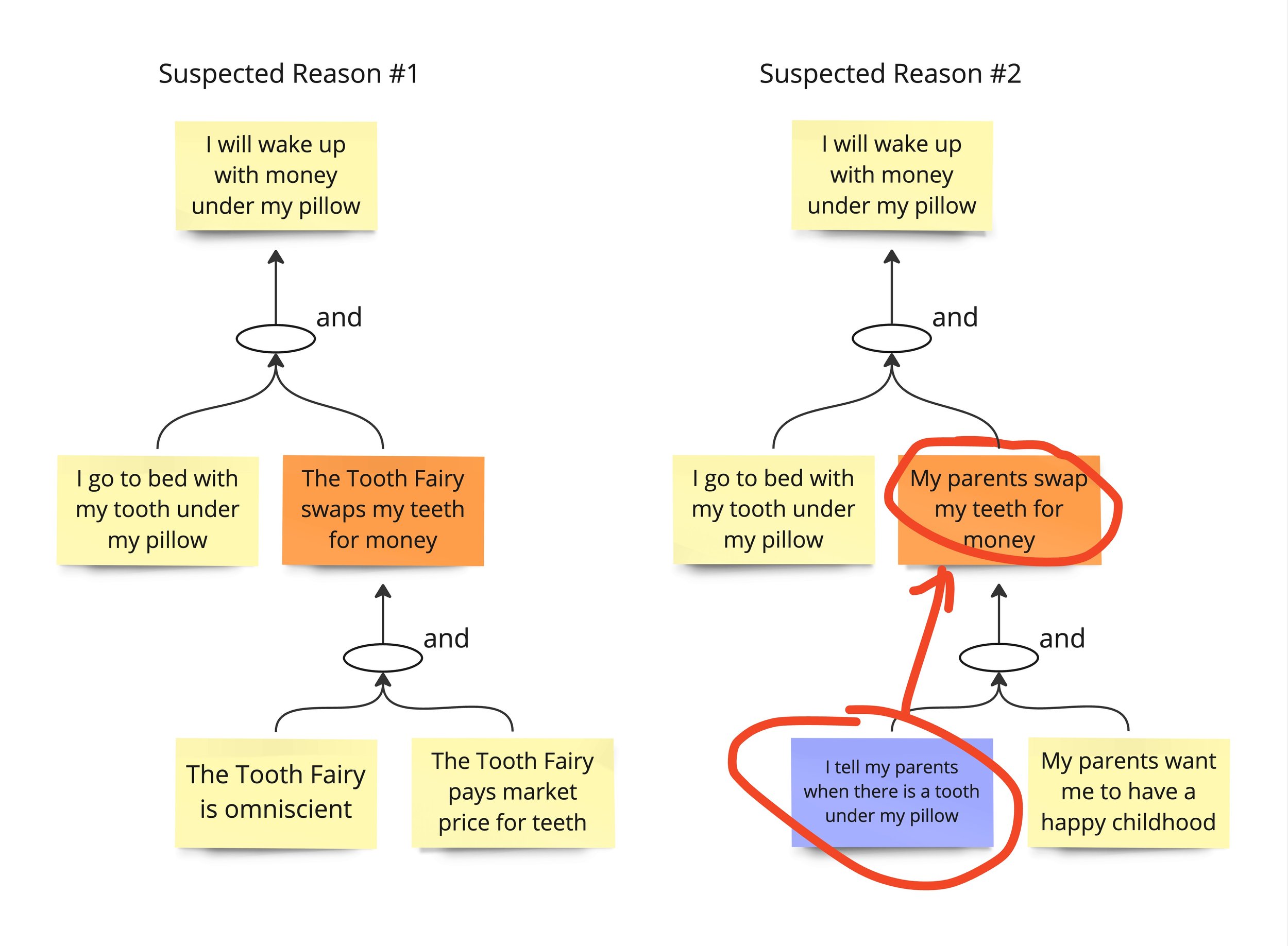Reminder to Review Reasoning
The Tooth Fairy taught me about assumptions.
Recounts Neil deGrasse Tyson:
“I don’t like lying to my kids, but I don’t want to deny them certain pleasures of childhood.
“My daughter lost a tooth. I said to her ‘I heard if you put the tooth underneath your pillow, the Tooth Fairy will swap it out for money.’
“So then she does that, we sneak in, and she wakes up and says: ‘Daddy, look what the tooth fairy brought!’
“‘How do you know it was the tooth fairy?’, I asked.
“So for the next couple of teeth, my daughter tried to rig her room so that anyone coming in would make a noise and wake her up. But she never woke up, and she still kept getting money.
“Then there was the suspicion that maybe the parents were involved.
“So, my daughter got together with her friends at school. They agreed that, whoever's tooth next came out would not tell their parents, and see if the tooth fairy comes.
“That experiment was coordinated. They did it. There was no money under the pillow. This turned what was a fun childhood thing into an investigative experiment.”
Dr deGrasse Tyson’s daughter suspected two reasons for why money appeared under her pillow (in orange). Either the Tooth Fairy was swapping her teeth for money, or it was her parents. Which one could it be?
She realised that the second reason - that it was her parents - relied on her parents first knowing there was a tooth to collect (in purple).
Thus her hypothesis:
IF I don’t tell my parents there is a tooth under my pillow
AND I don’t wake up to money under my pillow
THEN it is more likely my parents are doing the swap
BECAUSE the Tooth Fairy is Omniscient, and doesn’t need prompting
The experiment was crowdsourced, and her hypothesis validated.
In organisations, it is easy to guess the reason behind what we’re seeing, and forget to validate whether we’re right. We may believe staff aren’t volunteering for work because they’re lazy, or project delivery is slowing because we do not have sufficient agile ceremonies.
Fundamental attribution error makes it more likely we’ll blame people, versus the way our organisation is (mis-)designed.
As Lisa Scheinkopf reminds us, “People are hurt and organisations do not improve, due to our carelessness in the use of ‘because.’”
The takeaway? Repeatedly blaming staff for failures is akin to blaming Tooth Fairies for taking your teeth. Be a good scientist, and check your reasoning.
